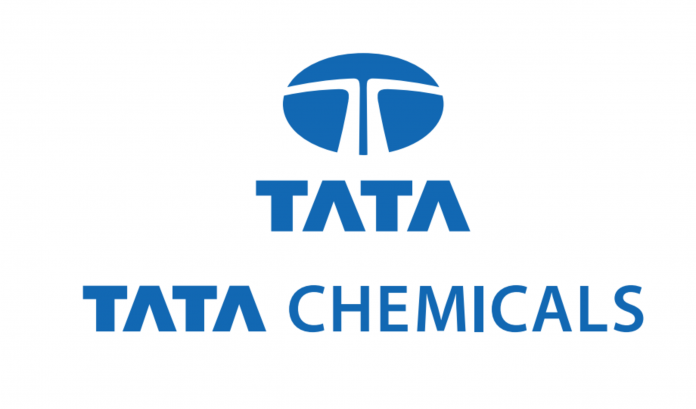This article has been written by Sneha Asthana, pursuing the Diploma in Business Laws for In-House Counsels from LawSikho.
Table of Contents
Introduction
Corporate Social Responsibility is one of the globally recognized characteristics of companies. It intends that the company grows in a sustainable manner meaning that while companies can focus on making their profits, they cannot do so at the risk of harming society which includes the environment as well. India was also seen mandating Corporate Social Responsibility through Section 135 of the Companies Act, 2013 which works on a “comply or explain” basis. The section mandates companies of a particular size to set aside a minimum of 2% of their profits for abiding by the corporate social responsibilities so necessary.
As a result, several corporate identities have upped their game in helping society, either through financial aids or voluntary work. The government of India finds it imperative for these organisations to give back to society in all ways possible, however, it provides that these organisations also focus on their growth. The Tata Group, founded in 1868 is a conglomerate of automobiles, chemicals, agriculture, and steel. Being one of the widely spread-out organisations, the Tata Group has always followed the motto of “giving back to society what you have earned from them.” Since their inception, they have been known to practice measures for the welfare of society. This case study focuses on one of its sub-organisations, Tata Chemicals, and their measures for Corporate Social Responsibility.
Tata Chemicals and corporate social responsibilities
Tata Chemicals Ltd is a company established by the Tata Group in Mithapur, Gujarat in 1939. Similar to all the other companies under the Tata Group, Tata Chemicals also has its initiatives it has taken for the welfare of the society under the Corporate Social Responsibilities which are published in their 2017 Policy. Initially, the initiative was only taken to help develop the people of Mithapur and its surrounding areas, however, now the initiative extends to people in Uttar Pradesh, Tamil Nadu, etc.
Tata Chemicals has been renowned for many reasons, one of which is the prominence they place in their Corporate Social Responsibilities. Ever since the various companies under the name of Tata Group have been created, their efforts to help society have increased drastically. It is one of the only groups that began giving back to society even before the government made it mandatory to do so. The Tata Group has also succeeded in following the 10 principles given out by the United Nations.
Corporate Social responsibilities find their essence in the welfare of society. No commercial activity can run smoothly without the support of society and the people. It’s only obvious that companies repay society in all manners best of their interest. Various definitions have been given to the characteristics which essentially talk about businesses inculcating the ecological and societal concerns are missions they need to accomplish while running their business. After several different conventions, the United Nations came up with 10 principles that are considered as guidelines to maintaining corporate sustainability. These 10 principles focus on human rights, labor, environment, and society (corruption). Considering these principles to be the basis, all members of the United Nations have adopted practices that help them reach the goal of societal welfare.
Tata Chemicals has done that with absolute perfection. Their several programs of education, training, awareness about a plethora of issues faced by people have seen manifold benefits. Some of these initiatives have been discussed below.
What are the initiatives taken by the company?
The primary initiative Tata Chemicals has taken is the Tata Chemicals Society for Rural Development in 1980. According to a Corporate Social Responsibilities study, Tata’s initiatives focus primarily on the rural areas and their development. This society aims to initiate and support community development of the areas which are located in and around their facilities. The aim of this initiative is divided, viz.:
1. The promotion and growth of the rural economy and rural welfare
TCSRD ensures the promotion and growth of the rural economy along with rural welfare by introducing these areas and their people to farm-based and non-farm-based livelihoods such as animal husbandry, manufacturing handicrafts, etc.
2. Activities relating to environmental protection and conservation of natural resources
TCSRD also puts a major focus on conserving and protecting the natural resources by ensuring to spread awareness of it, covering natural resource management, using nature-friendly products, joining forces with several various voluntary organisations to protect and rescue animal species.
3. Creating and developing facilities for public education
TCSRD has partnered with several not-for-profit organisations and institutions that have first-class experience and a wide variety of knowledgeable faculty that educates the youth and working members of society. These educational programmes range from being of technical knowledge to the kinds of advanced agricultural practices.
4. Fostering conservation and research in the field of natural history
Several individual scientists and not-for-profit environmental organisations have teamed up with TCSRD to ensure that all possible avenues have been touched to ensure that conservation of nature is studied well and planned with the ongoing operations of the organisation.
5.Other programmes for promoting the socio-economic development and welfare or uplift of the people in any rural area in India
Under the following aims, TCSRD provides for building economic capital, ensuring environmental integrity, enablers for social, economic, and environmental development, and building social capital through agricultural training, financial aids, spreading awareness, empowering people, women especially, to earn their incomes. TCSRD follows the procedure of setting certain goals under each of these aims. These goals are drafted for a particular period and have to be met within the said time frame.
Some of these goals are:
- No poverty and zero hunger – This goal has been created by the team under their aim of building economic capital. This measure focuses on eradicating poverty by employing all capable people in the varied industries available in the areas where the TC facilities are set up. This way, the people are ensured of a steady income which could help in both, eradicating poverty and reducing hunger. People are employed in both farm-related works such as agriculture and livestock management and non-farm-related work, such as skill training programs, helping people set up small enterprises, supporting self-help groups, etc. One of the main groups was the Okhai Centre for Empowerment made for tribal women to help them find an alternate source of income. This Centre encouraged women to pursue their traditional handicrafts for a living and this was supported financially by Tata Chemicals.
- Climate action, life below water, and life on land – These particular goals have been created to ensure environmental integrity while performing the operations required. Teams have educated people, devised advanced methods of agriculture, horticulture, and aquaculture, and discovered alternate ways of farming to ensure their ways of work do not impact negatively on any aspect of the environment and that all the available resources are optimally utilised. Some of their measures focus on biodiversity conservation, water development, and management, soil management, waste management, etc. One of the major programs that have been introduced by TCSRD is the Centre for Sustainable Conservation Action for the Protection of the Ecosystems of the Seas (C-SCAPE) which was created to be a Centre of excellence for all matters of water.
- Education, health and nutrition, and drinking water and sanitation – These goals have been created with a mission to overcome issues such as poor education infrastructural facilities, poor drinking water facilities, inadequate sanitation, high dropout rate, etc. The program focuses on achieving a ‘no dropout rate’ from all the individuals between the ages of 5-14. The program also puts in efforts to ensure a good and easy water supply with proper sanitation guidelines. Measures were taken under the subcategory of enablers for sustainable development.
- Gender inequality reduced inequality, and partnership for the goals – These goals have been created under building social capital to bring equality and independence for women who work in the same farm-related and non-farm related activities but are often not given the same status as a man even though they earn bread for their families. This program also helps in alleviating inequality between the marginalized communities as well through their affirmative action plans with focus areas under employability, entrepreneurship development, employment, and essential amenities. Community engagement through several meetings and seminars together is also looked upon.
Findings
According to the reports on their website, the following and more people have benefitted from their initiatives:
- The measures taken under building economic capital have proof of being helpful as there have been people attending these pieces of training and schools, learning about production and farming yield. One such case of Mr. Jagdish Manek from Okhamandal proves the accuracy and benefit of such training. He was a 21-year-old farmer struggling with certain yield issues. However, as he was a member of Ashapura Farmers Group, a group created by TCSRD, he was able to get training on the production and yield of vegetables hosted under this initiative, which turned out to be fruitful for him.
- Another one of the great measures taken by TCSRD under Ensuring Environmental Integrity is Prakrithi Parivaar. This measure was taken up to protect and conserve all elements of nature. One of the most recent measures was to protect the endangered species of sparrows named House Sparrow. One Mrs. Meena Badiani, a volunteer of Prakrithi Parivar was helped by TCSRD to conduct surveys in all domestic homes in the said area and enquire how many houses could keep such birdhouses in their own homes. It was through TCSRD’s help that Mrs. Badiani was successful in not only conducting these surveys but also maintaining those bird homes in several areas thereby increasing the numbers of these sparrows day by day.
- Similar to the above cases, one such success story comes from the goals of enablers of sustainable development which shows is an example of the financial and educational support given to people for overcoming problems like malnourishment. Mr. Manisha Jamre, a resident of the interiors of Pati block approached the TCSRD team in a sector level meeting for problems on malnourishment in the children and the lack of knowledge of proper nutrition amongst the adults. TSCRD provided her with adequate training and education which not only allowed her to interact with the community and spread awareness on malnourishment issues but she was also given the chance to expand and share her knowledge on maternal health issues and infant and young child feeding issues. She has been able to help the community further by personally guiding people to take care of their immunity during the pandemic.
- Lastly, one of the major wins bagged by these initiatives can be seen in the Okhai Story. Tata Chemicals, which was already partaking in promoting products from the Saurashtrian regions, where the Okhai women originally belong, also began promoting the handicrafts made by women from the Rabaris, Aghris, and Vaghers tribal groups. TCSRD took this as an additional opportunity as they were already involved in promoting handicrafts from areas native to them, precisely in Gujarat. The Okhai handicrafts then began their journey on a small scale resulting today in women earning anywhere between Rs 4,500 – Rs. 11,000 per day. However, such an amount is paid to women according to their time, pace and skills. Essentially, the idea remains in allowing women to find comfort with their skills and to avoid pressuring them. Approximately 4,000 families have found a source of income through these initiatives for rural women and the TCSRD continues to reach a target of about 10,000 families in the next 5 years. While the Okhai handicraft industry has given a lot to women financially, it has also given them several benefits such as independence in decisions, more respect in the society, a louder voice, a representation, and as the industry works focusing primarily on the comfort of a woman, it also allows them to work from their homes, meaning they have also been given significant flexibility in their work. The Okhai Industry is one of the landmark achievements of the CSR initiative taken by Tata Chemicals. They continue to put in efforts to expand this industry country-wide and help as many women as possible through this initiative.
Conclusion
The Tata Group has been one of the most widely renowned groups not only for the success of their business but also for ticking all the boxes when it comes to giving back to society. Following the words of Mr. Jamshetji Tata, the famous Indian Industrialist, the Tata Group is certainly giving back more to society than it has earned from them. Tata Chemicals, in particular, has also seen itself making efforts to abide by the 10 principles of the UN for sustainable growth. The principles of labor and environment reflect clearly in their initiatives to reduce gender disparities and discrimination in employment by giving an equal opportunity for women to work and their significant measures to protect their environment almost mirrors the words of the principles by themselves. The Tata Group has always focused on developing those areas that have been in close vicinity to its facilities and have successfully done the same. However, in a developing country like India where one can find several rural areas that require development, Tata Chemicals would prove to be a rescue for the entire country if it could extend its sources to wider geographical areas. The Tata Group, which includes Tata Chemicals, is a one-of-a-kind industry with magnanimous amounts of resources to help society. The equal distribution of its resources in such regard would benefit higher numbers of people than just those individuals who have had the luck of living around Tata facilities. For instance, Tata Chemicals immensely helps the people of Gujarat because it finds itself located in that area. However, areas such as Karnataka, which could also use the generosity of such an industry fall short of the help they require. Hence, the pursuit of expanding its reach to other parts of the country which don’t necessarily have to be associated with Tata would result in the betterment of the society as a whole.
References
- https://www.tcsrd.org/case-studies/helping-little-birds-spread-wings.html
- https://www.tatachemicals.com/upload/content_pdf/csr-policy_20161012071424.pdf
- https://csrbox.org/India_Company_Tata-Chemicals-Limited-Maharashtra_5427
- http://www.tjprc.org/publishpapers/2-67-1595226177-389IJMPERDJUN2020389.pdf
- https://www.unglobalcompact.org/what-is-gc/mission/principles
- https://www.vskills.in/certification/blog/international-principles-of-csr/
- https://www.smartrecruiters.com/blog/top-corporate-social-responsibility-trends-in-2020/
Students of LawSikho courses regularly produce writing assignments and work on practical exercises as a part of their coursework and develop themselves in real-life practical skills.
LawSikho has created a telegram group for exchanging legal knowledge, referrals, and various opportunities. You can click on this link and join:
 Serato DJ Crack 2025Serato DJ PRO Crack
Serato DJ Crack 2025Serato DJ PRO Crack











 Allow notifications
Allow notifications



